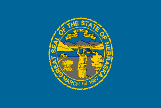Responses came in from 100 NAVA members and over 300 members of the public in 20 countries. Participants rated 72 flags on their design qualities (rather than on political, historical, or geographic considerations) on a scale of 0 to 10, where 10 was the best score. They were asked to rely on their personal sense of good flag design in rating the flags, which appeared on the web page. They cast well over 29,000 individual votes.
NAVA members favored strong, simple, distinctive flags, choosing New Mexico, Texas, and Quebec in first, second and third place, all with scores above 8. They scorned the "seal-on-a-bedsheet" design common to more than half of U.S. state flags, forcefully relegating those flags to the bottom of the heap with scores averaging less than 4.
One flag drew far more attention than all others did. NAVA members and the public both gave the new Georgia flag the lowest score—2.4 points—by the largest margin of any flag. Some even asked to give it negative points. They disparaged Georgia’s flag as "a scalawag", "desolating", "simply awful", "hideous", and "by far the ugliest". Its complex design violates all the principles of good flag design, incorporating a seal, lettering, and a series of miniature historic flags (in incorrect order). One person derided it as "Five Flags Under Georgia".
Canadian flags fared significantly better than U.S. flags, with an average score of 6 points versus 5. Canada’s provincial flags generally avoid seals and tend towards more simple designs.
The state-seal-on-a-blue-background design of so many U.S. state flags dates back to the 19th century adoption of regimental flags to represent the states. They are relatively indistinguishable from each other at any distance, except perhaps Oregon’s flag, which is the only one to have a different design on the back.
Texas briefly led the results after NAVA president Dave Martucci mentioned the survey in a radio interview on Texas Flag Day. But the three-day flurry of responses (likely from Texans) was eventually diluted by other responses and Texas sank back into second place. Others betrayed their partisanship in their comments, such as "Long live the green flag" from a Washingtonian.
The public’s overall responses paralleled those of NAVA members quite closely, with the public tending to score flags a half-point lower, on average. As might be expected, the public’s scores dispersed a bit more broadly, with a slightly higher standard deviation. Their insightful comments showed a strong intuitive grasp of flag design and confirmed NAVA’s expert opinions on design principles. One doesn’t need to be a flag expert to know a good flag design.
NAVA has invited each respondent to become a member.
In a surprise result, the combined NAVA-public rankings handed the top flags a three-way tie, with less than 1/100th of a point separating their scores (that margin is so small that one person changing his vote could alter the first-place score).
The highest-scoring flags all embody the five basic principles listed in NAVA’s upcoming publication on flag design, Good Flag, Bad Flag:
1. Keep It Simple (The flag should be so simple that a child can draw it from memory…)
2. Use Meaningful Symbolism (The flag’s images, colors, or patterns should relate to what it symbolizes…)
3. Use 2–3 Basic Colors (Limit the number of colors on the flag to three, which contrast well and come from the standard color set…)
4. No Lettering or Seals (Never use writing of any kind or an organization’s seal…)
5. Be Distinctive or Be Related (Avoid duplicating other flags, but use similarities to show connections…)
Good Flag, Bad Flag is downloadable free from the NAVA website: www.nava.org. It can help any organization, tribe, company, family, neighborhood, city, county, state, or even country design a great flag.
The survey, quite possibly the first of its kind conducted entirely over the Internet, lasted three-and-a-half months, and has contributed new insights into the public perception of flags and their design. Ted Kaye, editor of NAVA’s scholarly journal and author of Good Flag, Bad Flag, conducted the survey; Dick Gideon, NAVA’s webmaster, designed the survey page.
REPRESENTATIVE SURVEY COMMENTS
A flag should be the simplest possible design consistent with bearing a unique, easily distinguished identity…those with complex detail in their composition defeat the purpose of a flag.
The main purpose of a flag is identification. Yet half of the US’s states have flags that to the untrained eye, or from a distance, look identical.
Simple flags, clear colors, not too busy. Shields on fields are bad.
… a flag which needs to indicate its significance by spelling out the state signified…is defeating the very purpose of a flag, that is, to signal "visually" without need of written signs.
A ‘good’ design for a flag, in my opinion, is one that can be identified at a glance (even in a stiff breeze!) and which is easy for, e.g., school students to sketch... everyone ought to be able to draw those flags that have significance for them.
All British colonial flags (e.g. Ontario) should go.
The blue-coloured flags remind me of the former Soviet republics’ flags. (comment from Sweden)
Recognition, simplicity, color, and uniqueness make, in my opinion, a pleasing design.
… the new Georgia state flag certainly is a shame to any flag designer. What a mess!
The whole purpose of flags, I thought, was to distinguish one from another.



















